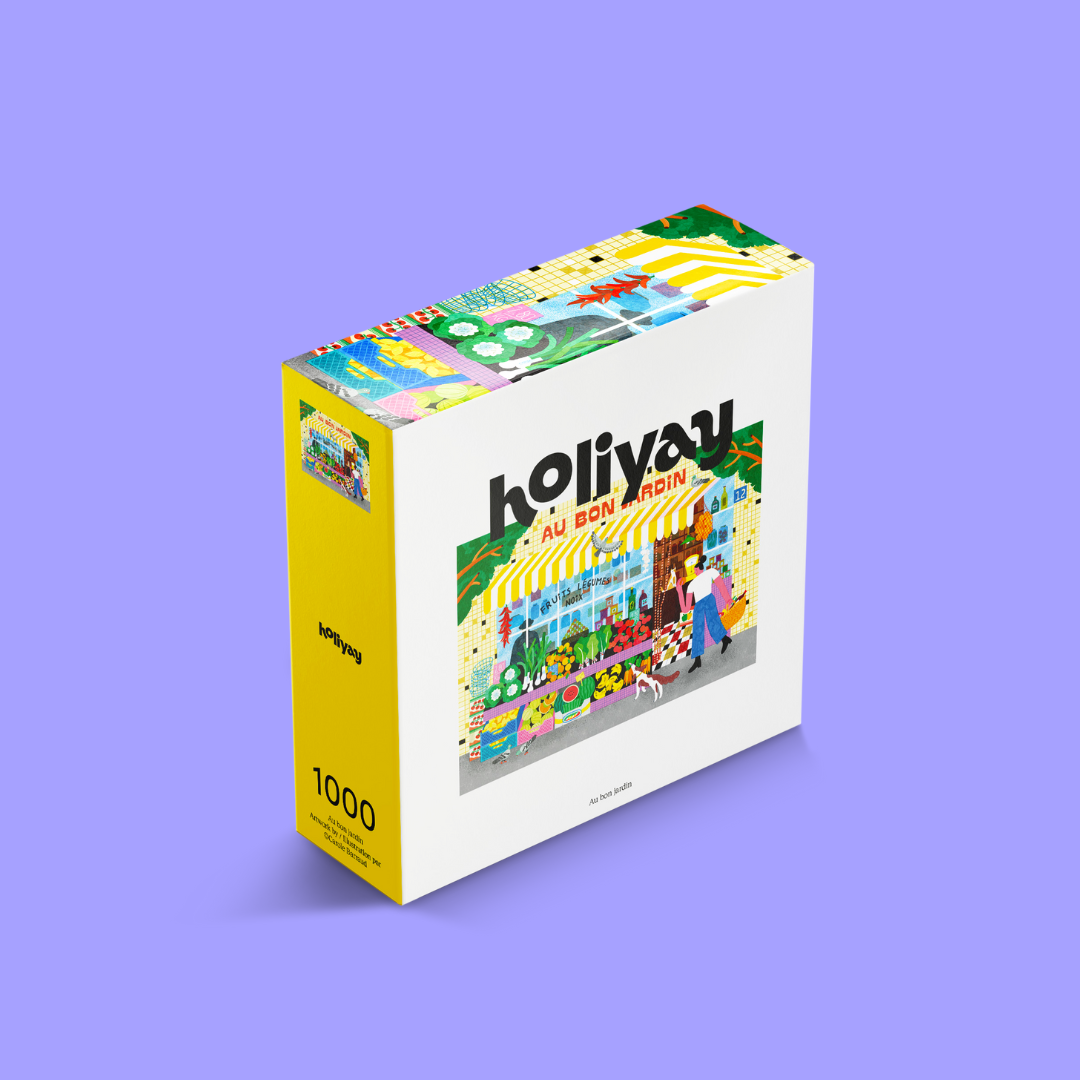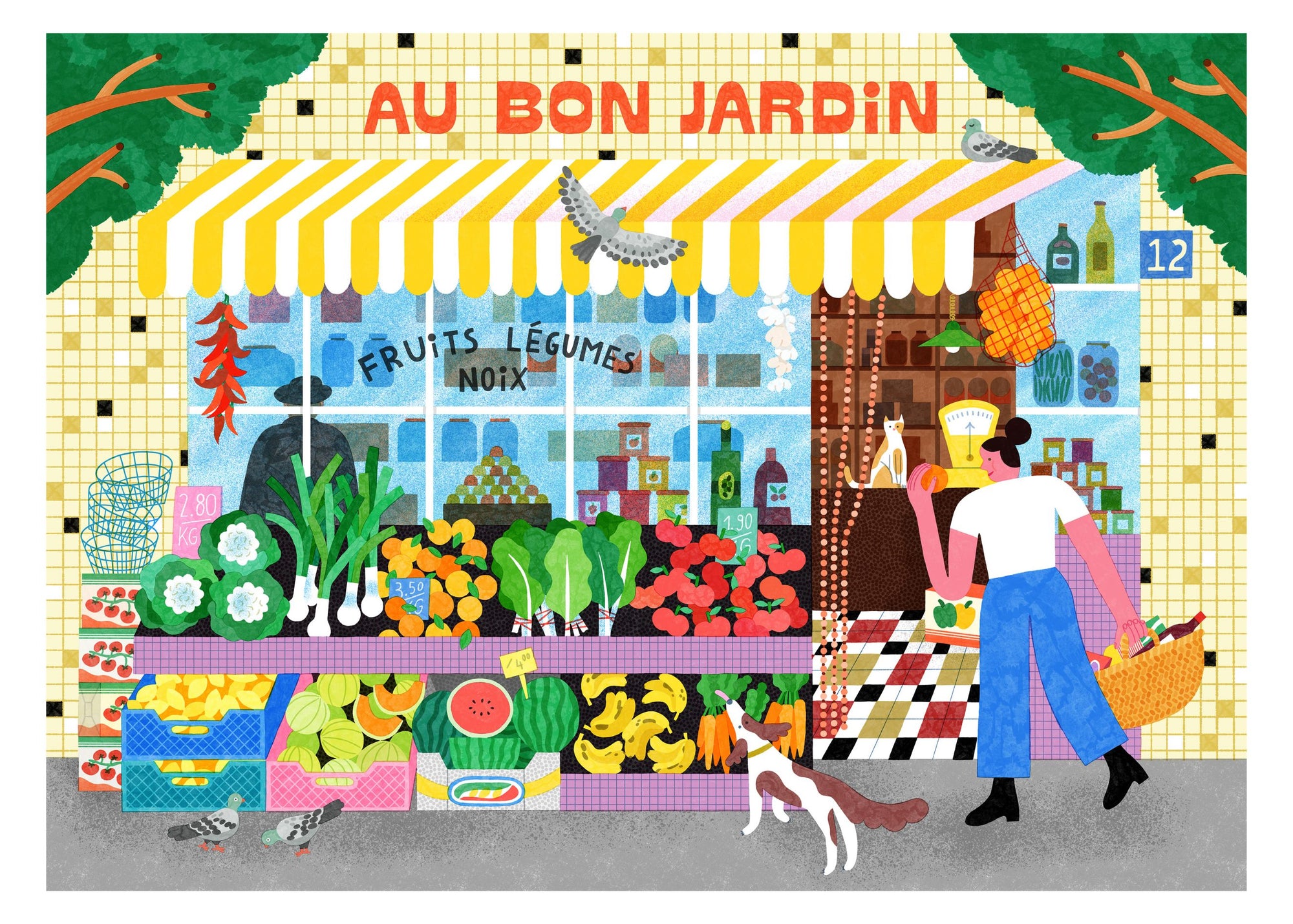Myriam Van Neste: A Journey Through Shapes, Textures, and Color

Known for her playful images and joyful worlds, illustrator Myriam Van Neste found her way into illustration in a rather unexpected way. With a background in visual arts, she first specialized in sculpture and public art. Along the way, she completed a master’s degree in environmental art at the University of Helsinki, then worked on various sculptural projects before gradually shifting toward collage and illustration around 2016. Since then, her illustrations have appeared across a wide range of formats. Crépuscule à Copenhague is her very first illustration created for a puzzle.
Can you tell us a bit about your journey? What made you shift toward illustration?
Sculpture and drawing have always been part of my artistic practice, but after my undergrad, I focused more on sculpture and public art. That’s what led me to pursue a master’s in environmental art in Helsinki, Finland. Over there, there’s a strong tradition of textile arts, design, and the use of color—it’s really part of the culture. I found that super inspiring, and there was definitely a shift in my practice toward the end of my degree.
At the same time, I moved to California and had my first baby. I didn’t have the space or time for large public art projects anymore, so I started exploring collage. It became a creative outlet that worked well with my time and space limitations, while still letting me keep that tactile element by working with cut paper. Later, I moved back to Europe and really enjoyed working with colored paper. That led me to textile design, then pattern creation, and eventually illustration. Since 2020, I’ve been working full-time as an illustrator for various clients.
Do you have any routines or methods you return to across your different projects?
I often start projects by cutting paper and working with collage to explore shapes and maintain a tactile feel in my process. After that, I move into digital tools to finalize the illustration. In some projects, the collage aspect remains very visible—you can see its texture in the final result. In others, like the puzzle I did with Holiyay, the digital aspect is more dominant.

There’s something dreamy and soft about your puzzle illustration for Holiyay. Where did the idea behind this image come from?
Holiyay actually reached out to me with the idea of creating a city-themed illustration. That’s something I often do and really enjoy. I like to create invented cities full of color, and that’s what I wanted to explore here, too.
As you mentioned, your work is always very colorful. In Crépuscule à Copenhague, you used different blue tones with a few bright color accents. How did you choose the palette for this project?
I often work with flat color areas, kind of like cut paper sheets. But for this puzzle, I added more textures and patterns to create interesting contrast between the puzzle pieces. The color palette I used here is broader than in some of my other illustrations, which gave me room to try something new.
Did working on a puzzle, as opposed to other illustration formats, change how you approached the process?
Yes, definitely! I wanted to make sure there were enough elements in the image and avoid having large flat-color areas, so the puzzle would be fun to complete. I overlaid a grid on my illustration matching the 1000 pieces of the puzzle, to help me visualize how it would break down. That really helped me place the different elements and refine the composition. I’ve wanted to create a puzzle for a long time, so I was truly excited to get the chance to do it with Holiyay!

Crépuscule à Copenhague by Myriam Van Neste






